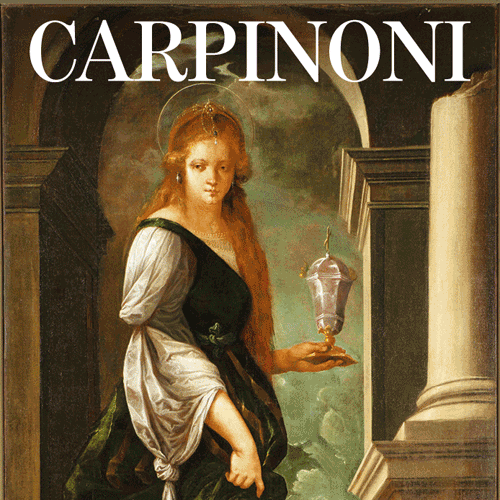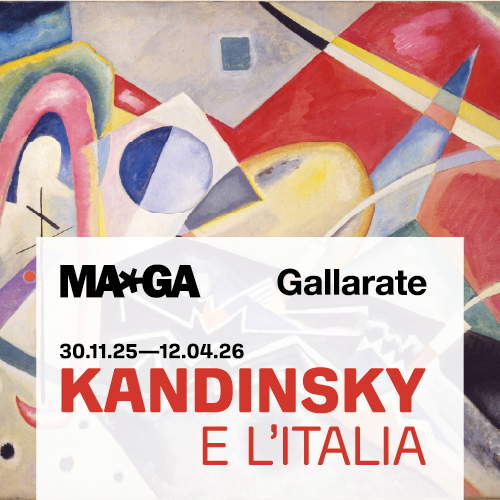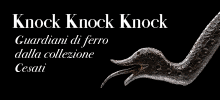
Siena, the capital of elegance
Siena is a city of elegance. Its ancient art school was an expression of refinement and preciousness. The Republic of Siena, as early as the 14th century, had the protection of beauty put into its Constitution. And even today its streets, squares and palaces, as well as its entire territory, are signs of a refined and measured beauty, respectful of nature.
By Redazione | 29/04/2025 13:05
Siena was perhaps the Italian city best loved by Vittorio Alfieri, who in his Autobiography, published in 1806, did not fail to praise itselegance, a quality peculiar to this city. "So great is the force of the beautiful and the true," Alfieri wrote about Siena, "that I felt almost a lively ray suddenly brightening my mind, and a most sweet flattery to my eyes and heart, in hearing the basest people of Siena so sweetly and with such elegance, propriety and brevity speak." And nineteenth-century guidebooks also remarked on the wit, directness and elegance of all Sienese. Even today, Siena offers itself to the gaze of the visitor as a city that is the custodian of an ancient beauty, measured and deeply rooted in its history. There is an intrinsic elegance that runs through every stone of its medieval streets, every line of its ancient buildings, every silence that slips through the hills that surround it. It is not just a matter of aesthetics: beauty and elegance are founding principles that have guided the life and spirit of this land for centuries.
As far back as the 14th century, the Republic of Siena had already sensed the value of beauty as a public good: in the 1309 Constituto, the fundamental charter of the state, the Republic required those who governed the city to cherish "maximally the beauty of the city, for cause of delight and cheerfulness to strangers, for honor, prosperity and increase of the city and its citizens." Siena, among the Italian municipalities of the time, distinguished itself by thus introducing into its Constitution the principle of safeguarding the landscape and urban harmony. A political and cultural gesture at the same time, testifying to how much the city was aware of its heritage and the need to preserve it, for itself, for those who visited it, and even for future generations ("accresccimento"). It was, after all, a form of moral elegance: recognizing beauty's right to exist and to be protected.
This vision is reflected in the great artistic season that made Siena a beacon in the European cultural landscape. The Sienese School, which flourished between the 13th and 15th centuries, expressed a refined formal sensibility, positioning itself as a stylistic alternative to coeval Florence. If Florence was the domain of plasticity, of order, Siena was the domain of formal elegance. Simone Martini, Ambrogio and Pietro Lorenzetti, Duccio di Buoninsegna: their names became synonymous with an art made of grace, measure and chromatic preciousness. There is not the plastic solidity of Florentine art, but a lyrical composure that elevates the pictorial narrative to a spiritual vision. The altarpieces, civic and religious frescoes tell of a world in which elegance is a cipher of representation as well as of living. The use ofgold in Sienese art of the time is only decoration, as it also takes on a narrative and spiritual function: it creates an eternal, timeless background where the sacred is manifested in light. The draperies of the robes, with their flowing, regular lines, evident especially in Simone Martini's art, testify to a miniaturist, almost goldsmith-like sensibility that gives the composition a precious, almost intangible quality. One need only look at the splendid Maestà in the Palazzo Pubblico, or the equally spectacular Maestà painted by Duccio di Buoninsegna for Siena Cathedral, and now preserved in the Museo dell'Opera del Duomo.
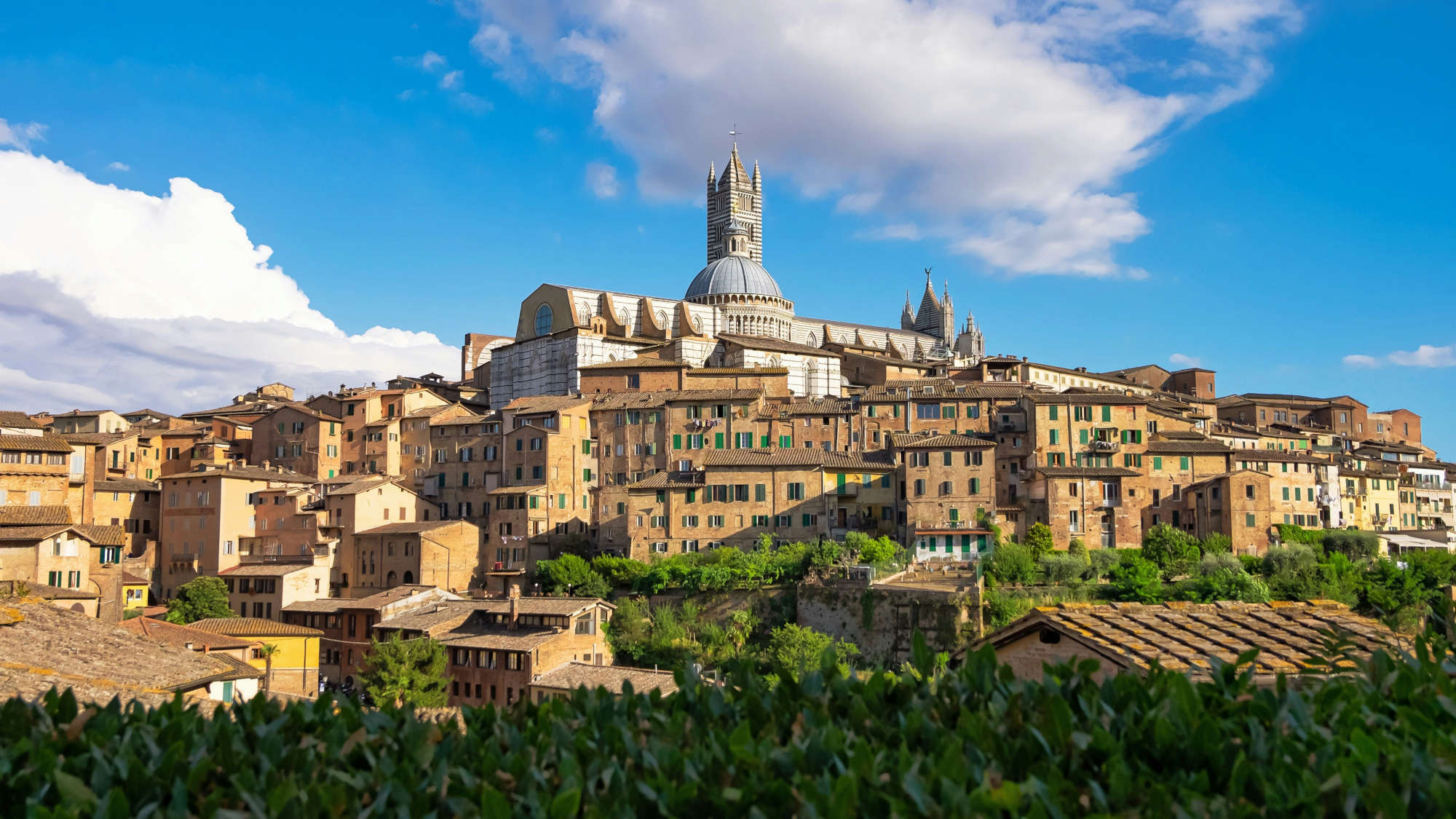
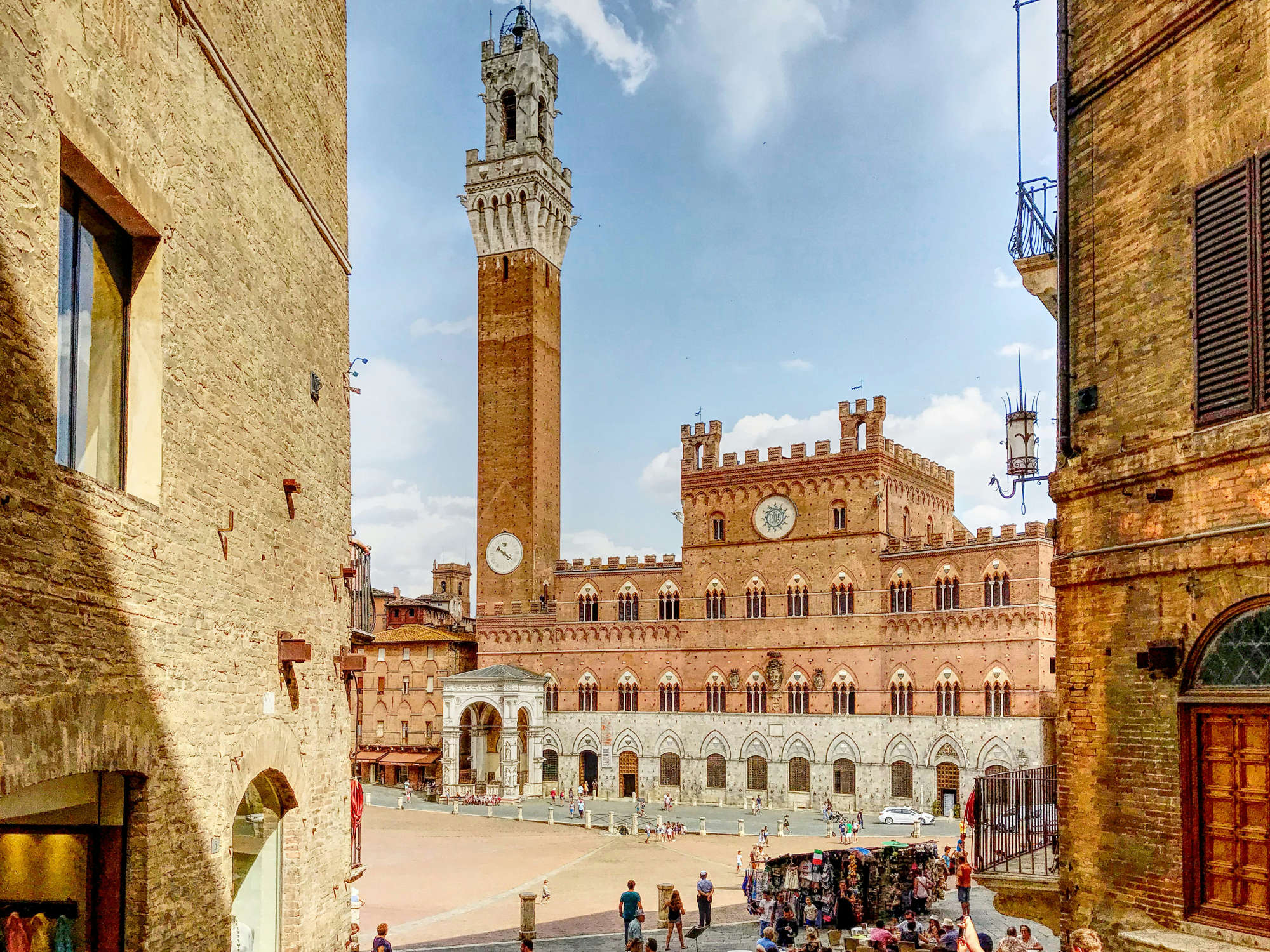
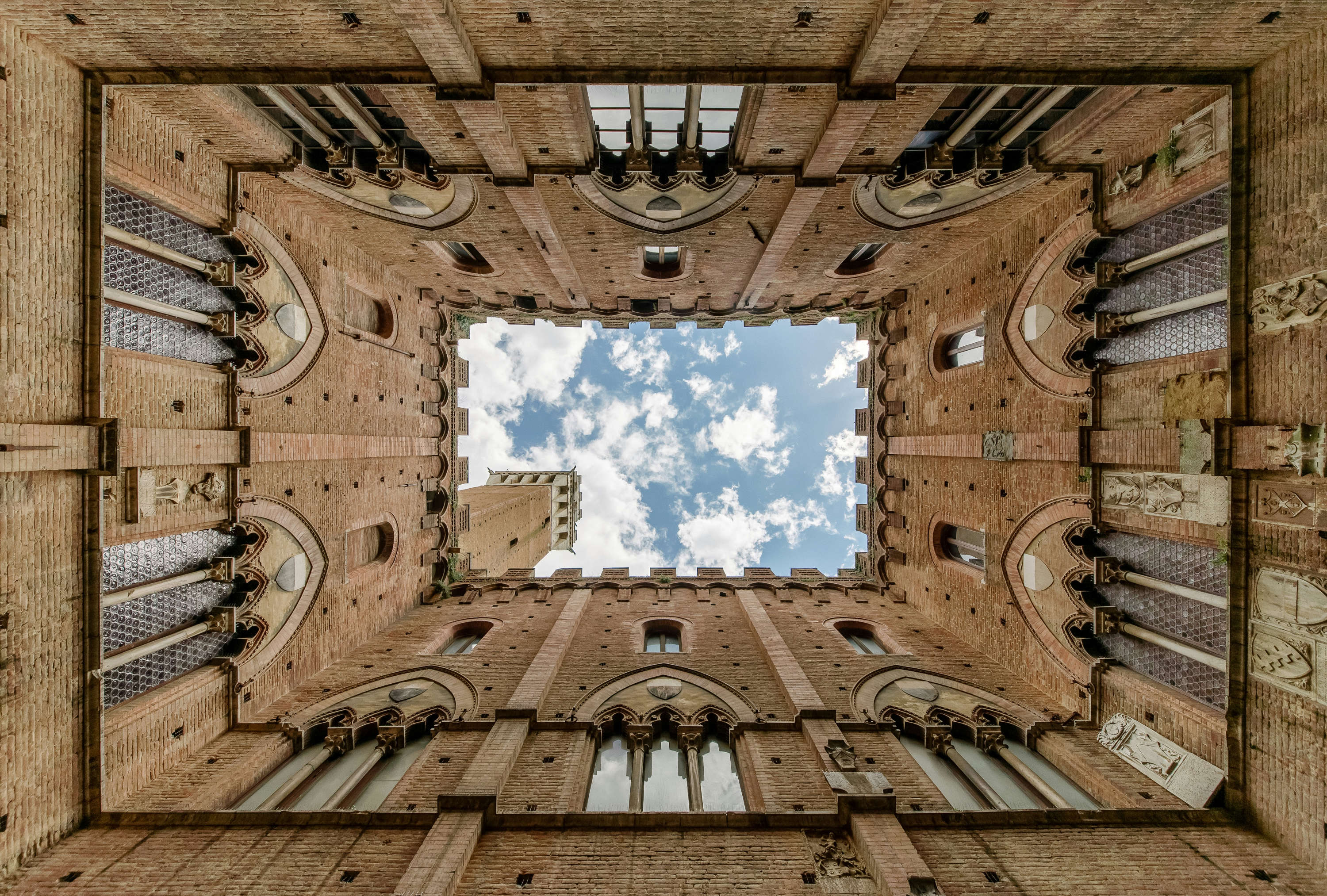
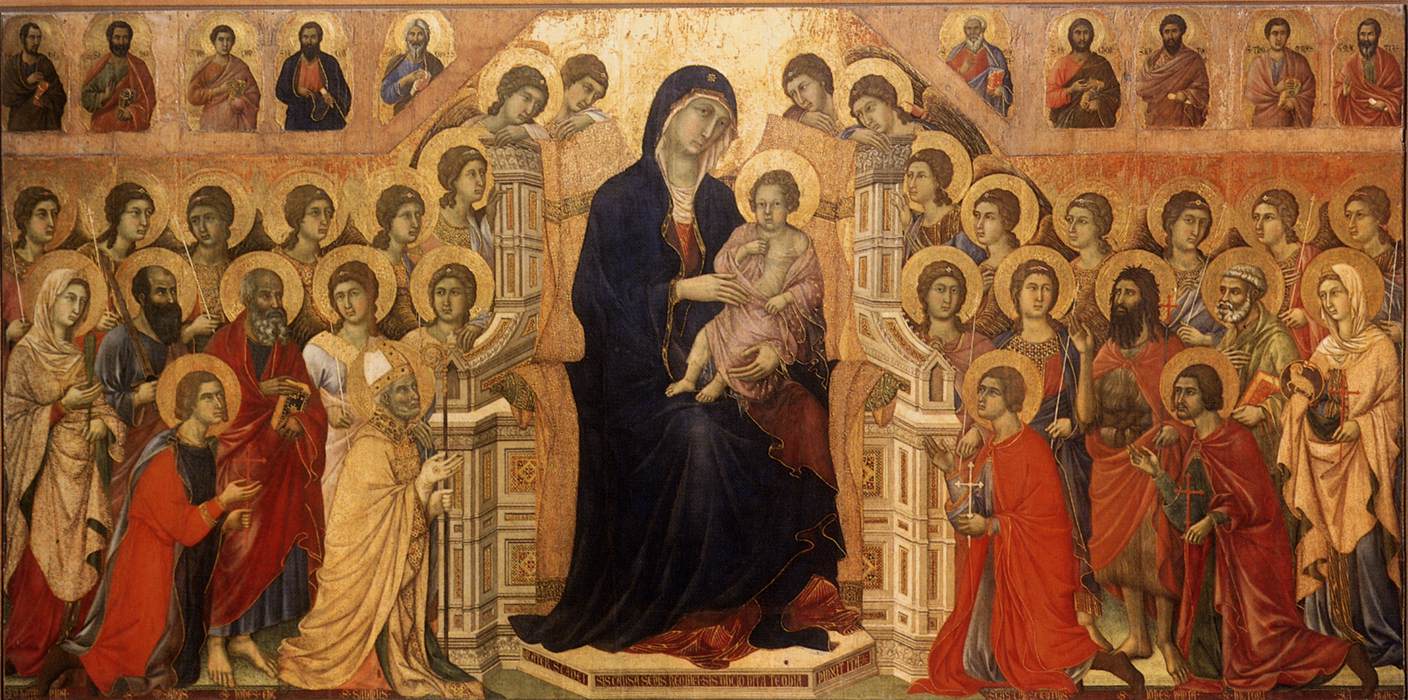
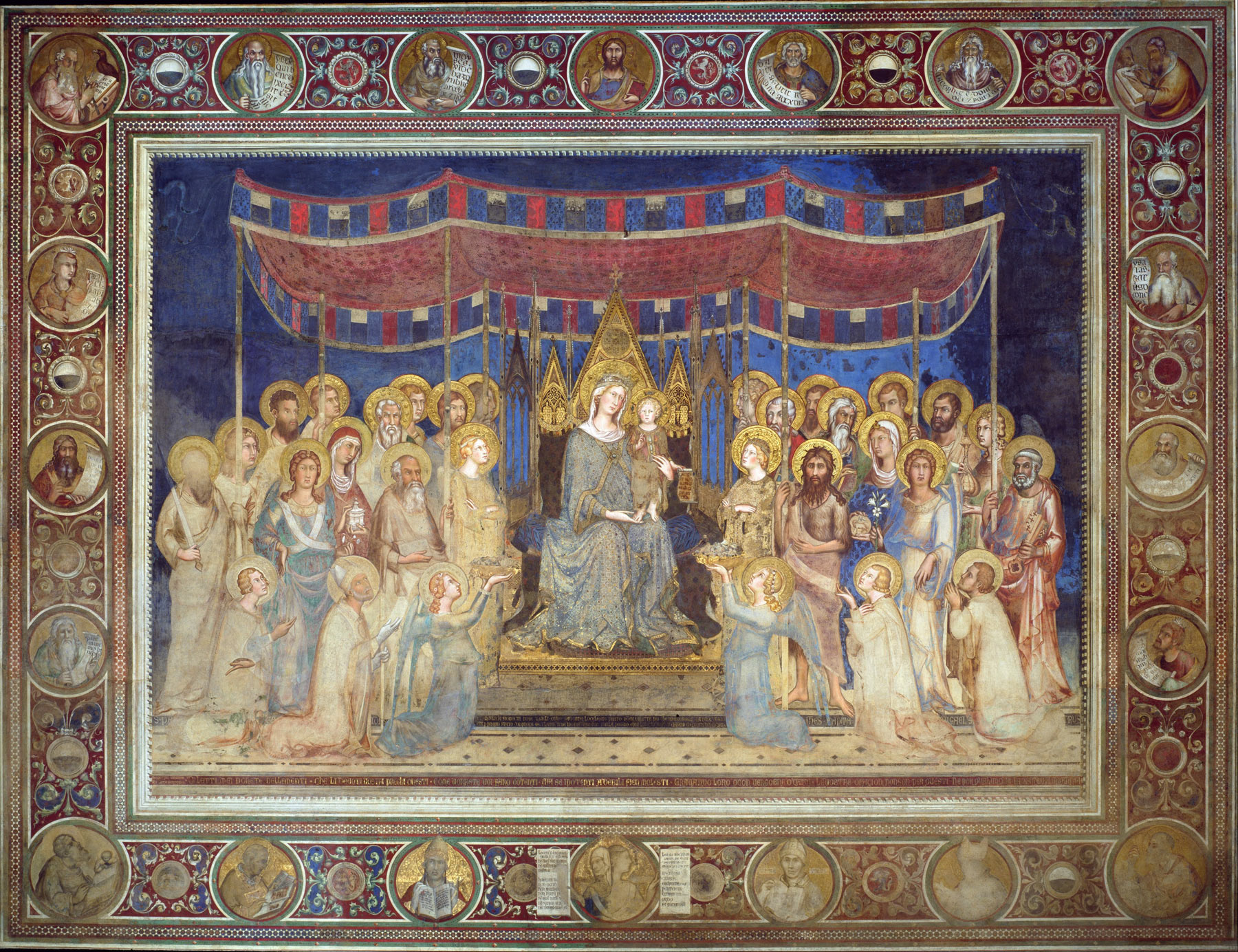
Different, but no less elegant, is the vision of Ambrogio Lorenzetti, author between 1338 and 1339 of the cycle Allegoria ed Effetti del Buono e del Cattivo Governo (Allegory and Effects of Good and Bad Government), which can also be admired in Siena's Palazzo Pubblico. Here elegance also becomes ethical, civic. In one of the first secular and civic representations in the history of Western art, Lorenzetti illustrates the effects of just and harmonious government on the city and the countryside. The urban scenes, with their perfectly ordered palaces, figures dancing and working in peace, show an ideal Siena, governed by a sense of balance and measure, as opposed to a city instead poorly administered, in ruins as a result of bad government. Even in the most complex and politically dense depictions, the artist never renounces a compositional sophistication that clearly distinguishes the Sienese school. The proportions, the architecture, the characters' gestures: everything contributes to restoring a vision of civil coexistence based on shared beauty. Elegance here becomes a paradigm of the common good.
The elegance that pervades Sienese culture is not only expressed in the great fourteenth-century painting and its most celebrated masters. It is also manifested with equal intensity in the continuation of its art history (from the sixteenth century with artists such as Domenico Beccafumi or Sodoma to the nineteenth century by Luigi Mussini, whose refined scenes of history decorated the Risorgimento Room in the Palazzo Pubblico), in the applied arts and in architecture, both religious and civic. In these artistic forms, Siena has been able to combine formal refinement, compositional balance and a deep respect for tradition and harmony with the natural context. It is an elegance that translates into everyday objects, living spaces, and decorative solutions that testify to an extremely cultured visual culture, while rooted in a strong civic identity.
The Sienese applied arts of the Middle Ages and Renaissance reflect the same tension toward grace and perfection found in painting. Just think ofgoldsmithing and miniature painting, two fields in which Siena has excelled since the 13th century. Sienese workshops produced astylar crosses, reliquaries, chalices and pyxes in which the skillful use of gold, silver and precious stones was never aimed at ostentation, but at the sacralization of the object, at its election as a symbol of an otherworldly beauty.
Siena has managed, over the centuries, to keep this spirit intact. Piazza del Campo, with its shell shape, continues to be one of the most harmonious urban spaces in the world. The Palazzo Pubblico and Torre del Mangia dominate the city with understated authority, while the Duomo, with its two-tone marble and Gothic geometries, embodies a rare balance between solemnity and lightness. Walking along the narrow streets of the historic center, a UNESCO World Heritage Site, there is a sense of urban composure that seems to respond to unwritten rules, but internalized over centuries: every corner, every glimpse seems designed to accompany the gaze, not to impose itself on it.
Outside the walls, the province of Siena extends the principle of elegance to nature itself, shaped over the centuries by a respectful and conscious human presence, which has shaped the land over the centuries, giving life to one of Italy's most beloved landscapes (and continues to do so today, emphasizing even throughcontemporary art the fusion between human beings and nature: just think of projects such as the Chianti Sculpture Park or Jean-Paul Philippe's Site Transitoire in Asciano). The stone farmhouses of the Crete Senesi or the Val d'Orcia, with their compact volumes and tile roofs, are built with a sense of proportion that seems to respond to the lines of the hills. Just the Crete Senesi, southeast of the city, are one of the most emblematic examples of this territorial elegance. An almost lunar landscape, made up of bare hills, gullies, biancane, but anything but wild: it is a worked, meditated landscape, shaped over the centuries by sober agriculture, which has never violated the morphology of the land but has adapted to it, respecting it. The dirt roads that wind through the hills, the rows of cypress trees that accompany the natural curves, the farms on top of the heights: everything seems to respond to a logic that is not only functional, but aesthetic.
A little further south, the Val d'Orcia, now a UNESCO World Heritage Site, is an open, vast space where every element-from medieval parish churches to fortified villages, from geometric vineyards to fields of wheat-participates in a unified idea of landscape. The elegance here is in the synthesis of art and nature: historic centers such as San Quirico d'Orcia, Castiglione d'Orcia, Pienza or Montalcino stand out in the landscape like gems that do not overpower, but dialogue with the land. The gaze moves uninterruptedly between the architecture and the surroundings, and the effect is that of a balance that seems eternal. Sienese Chianti, in the north of the province, expresses another declination of the territory's elegance. Here, among dense forests and rolling hills, castles, Romanesque parish churches, and villages such as Radda, Castellina, and Gaiole are discreetly inserted.Wine architecture-historic and modern wineries-now represents a continuity with this tradition, where even innovation bends to a principle of harmony with the landscape. Elegance, here, is the art of not disturbing.
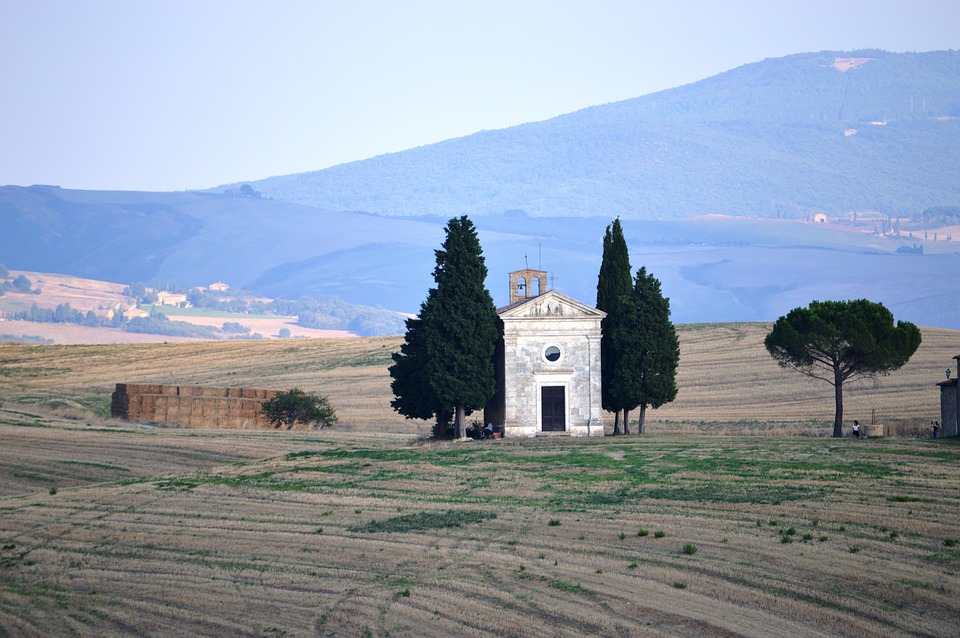
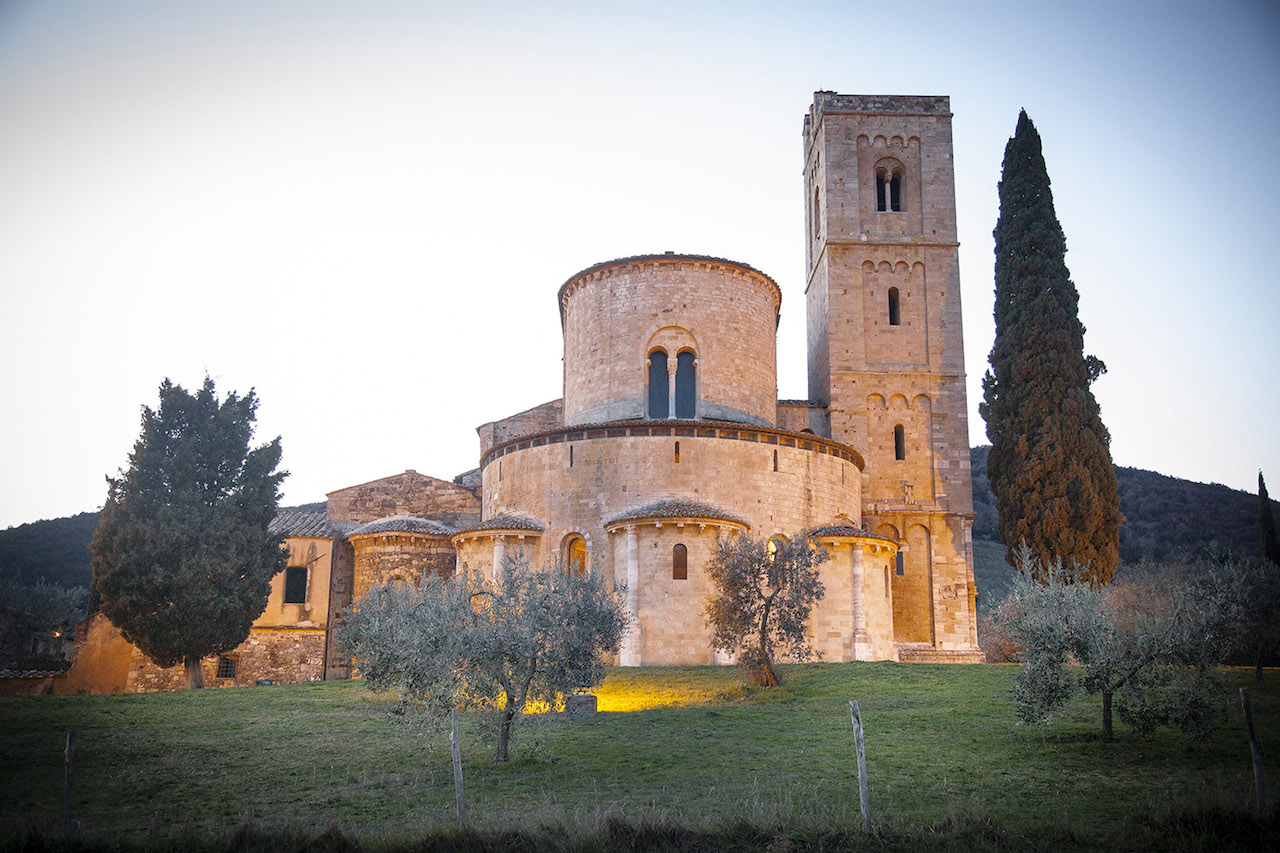
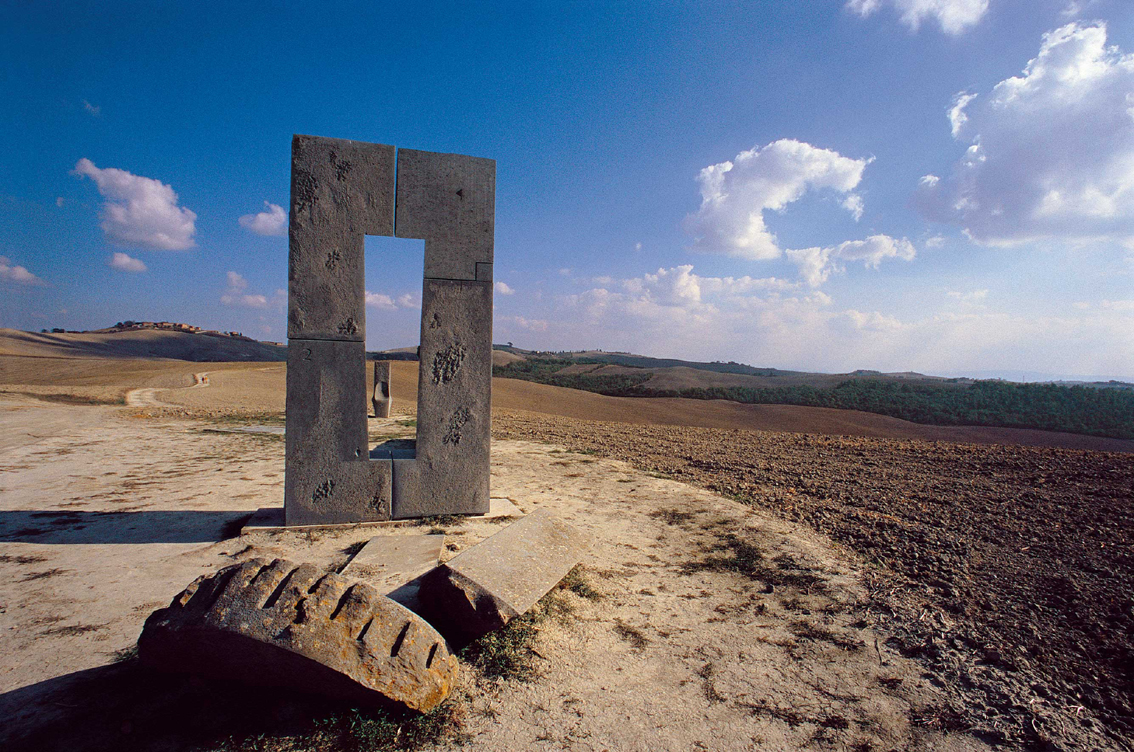
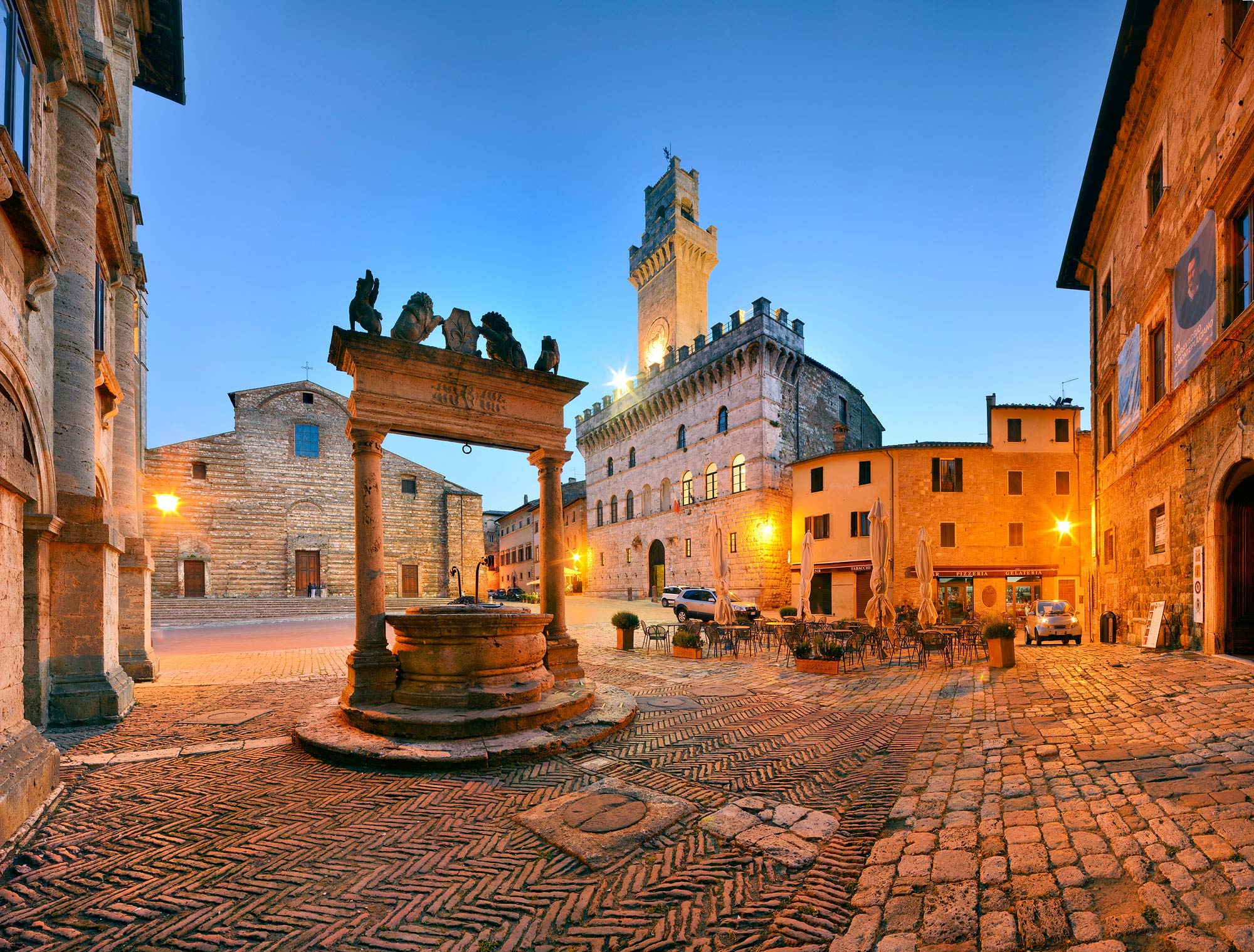
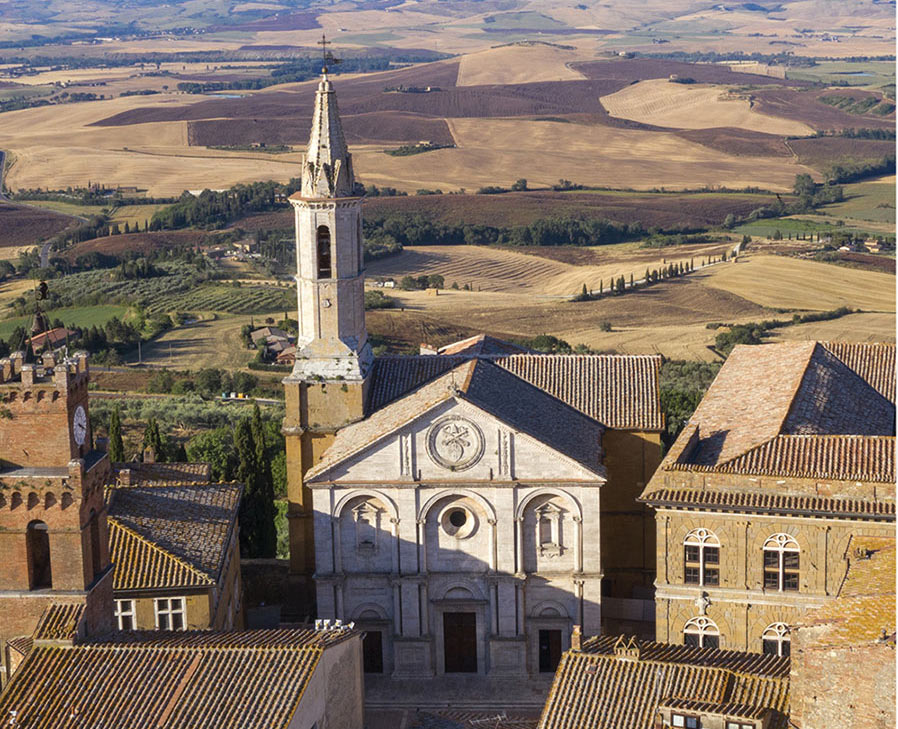
Again, the Romanesque parish churches scattered throughout the territory-such as that of Corsignano in Pienza or the Pieve di San Giovanni Battista in Monteroni-are examples of how spirituality could take shape in simple but precisely calibrated structures. Fortifications and villages, such as Monteriggioni or San Quirico d'Orcia, also show how defense and daily life could be translated into harmonious architecture. The ideal city planned by Pius II in Pienza - a Renaissance example, but a child of the same Sienese culture - is one of the most important testimonies to this desire to make the territory a living work of art, balancing urban planning, architecture and landscape.
The elegance of the Sienese territory is perhaps its most subtle and at the same time most profound quality, because it does not impose itself with grandiosity, but manifests itself precisely in the coherence between nature and culture, in the measure of landscapes, in the continuity between city and countryside. It is not just a matter of landscape beauty in the romantic sense of the term, but of a form of order, of respect, of ancient harmony between man and his environment. In this sense, the Sienese territory can be considered a true "landscape architecture," built over the centuries with the same aesthetic and spiritual attention with which palaces were erected or altarpieces painted.
In the Sienese territory, human intervention has always moved with a sense of measure that today we might call "sustainable" but that, in reality, is rooted in an ancient and deeply civic ethic of living. The agricultural landscape is not only productive but also expressive. Cultivated fields alternate with woods, vineyards, olive groves and pastures in a dense weave that designs space like a fabric. The farmhouses, often built of local stone, are examples of spontaneous architecture that responds not only to practical needs but also to a culture of rural decorum and dignity.
One could say that every corner of the area, from the historic center of Siena to the last farm on the hills of the Montagnola or Val di Merse, participates in an idea of elegance as harmony between the human and the natural. It is an aesthetic that does not impose itself with pomp, but asserts itself in silence, in continuity, in the grace of simplicity well done. Today as yesterday, Siena continues to be a rare example of visual civilization. It is so in its ancient rituals, such as the Palio, which is not just a race, but a codified representation of belonging, pride and collective theatricality. It is so in its cultural institutions, its universities, its artisans. Siena is, and remains, the home of elegance. Not the fleeting one of fashions, but the permanent one of values. And in a world that changes at an ever-accelerating pace, its lesson of measured and conscious beauty is a valuable invitation to slowness, depth, authenticity.


